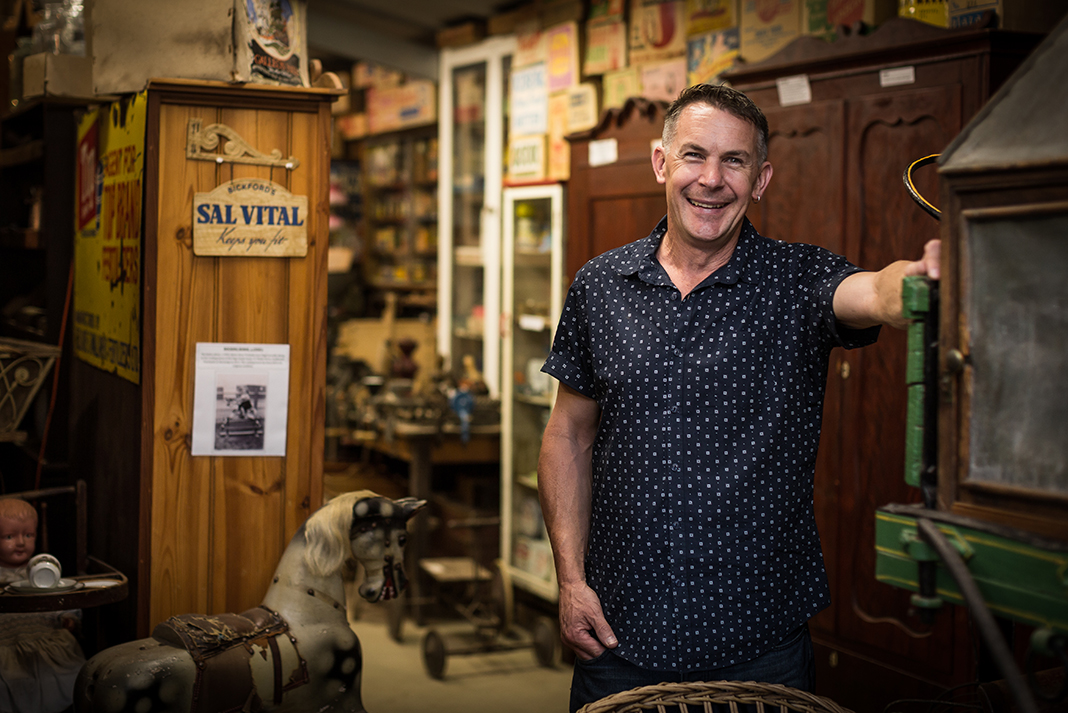barossa history
Gluepot Graetz – A cabinetmaker with flair
words by
luke rothe

German tradesmen were among the original Barossa settlers, and their trade skills were often passed onto their sons. However, Carl Ewald Graetz was the son of farmers, Rudolph and Eleonore Graetz (nee Rothe). Born in Keyneton in 1865, Ewald became an intriguing builder and cabinetmaker.
Unfortunately, it’s unclear where Ewald learnt his trade. A lidded blanket box from the Graetz family is dated 10 August 1876, in a style typical of his later work. However, in 1876, Ewald was only 11 years old.
Regardless of his early years, by 1887, a 21-year-old Ewald announced the opening of his business, ‘Cabinetmaker & Builder at North Rhine’ (Keyneton).
Two surviving blanket boxes, both dated 1888, display conventional Germanic cabinetmaking skills combined with unconventional decoration of gold painted flowers, foliage, and stars.
Ewald’s furniture typically used dark wood-grained finishes, incorporating light contrasting timber; with drawer and door panel edges being scalloped and highlighted in black paint with gold detail.
Some of his glass topped kitchen dressers were particularly stunning, featuring acid etched and coloured glass, mother-of-pearl escutcheons, glass knobs and decorative brass headed studs. On rare occasions inlaid wood or fretwork decoration were used.
Ewald’s personality was clearly shown with his flamboyant decoration techniques. He was a talented and exuberant individual who was often MC at birthdays and weddings and could easily make up a clever rhyme or poem about himself or others.



Ewald made a German rhyme advertising his business in 1913. Translation loses the cleverness of the original rhyme, but in part it translates to:
‘I make for you only the best wares…. which last eternally, plus three years.’
‘Herewith do I announce to you…. that we have a restaurant too.’
‘Appelt’s Cool Drinks I have for your thirst…. for your hunger, we have good wurst.’
No other information regarding Ewald’s ‘restaurant’ has been found, so the reference may simply indicate his hospitality to visitors.
Ewald’s rhyme also stated…. ‘For 25 years I boil my own glue’. Woodworkers used hide-glue which was boiled in a gluepot during a process called rendering. It is therefore fitting that Ewald had the nickname ‘Gluepot Graetz’, and the area where he lived was known locally as Gluepot’s Corner (now Graetztown).
Ewald produced more than just furniture. A ship model, a celebratory wedding diorama and a wedding wreath display box are attributed to him and they all show attention to fine detail.
The ‘Graetz Fly Lure’ was an intricate device made from plaited straw, cotton and wool, incorporating coloured foil and paper. Essentially it was a delicate and elaborate three-tiered hanging mobile about 70cm high. Apparently, children were fascinated by the antics of the flies that landed on these straw contraptions.
Ewald was noted for enjoying a ‘schluck’ (drink) of wine with customers, however this included unlawful wine sales from his workshop, and a subsequent ‘Keyneton Sly-Grog’ court case at Angaston in 1923.
Ewald ‘Gluepot’ Graetz died in 1937 but his legacy of furniture, decorative craft, anecdotes, and German rhymes make him an exceptionally distinctive Barossa cabinetmaker.



